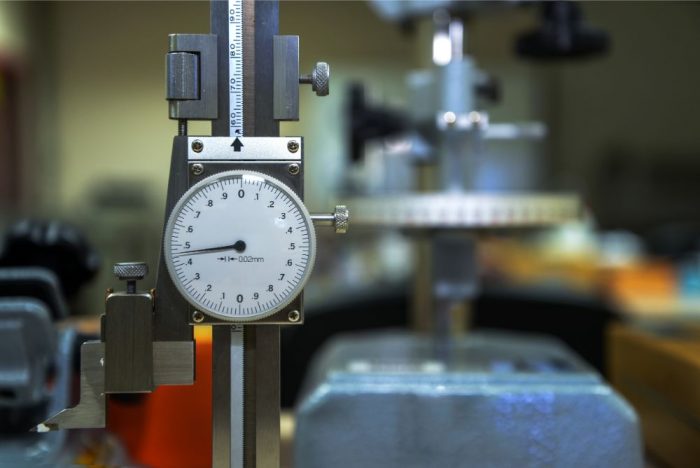Height gages allow a machine operator to measure the depth of an object with pin-point accuracy. These gages differ immensely from model to model but most have the same basic structure. They consist of an arm that is usually in contact with the object being measured and a measuring unit that moves up and down the scale. Height gages typically measure vertical spaces but can also measure other dimensions such as internal and external diameters. Ever wondered about the proper way to read height gages? Read on to find out more:
Vernier Height Gages
The
first step when using this kind of height gage is to lock the arm into position
after placing it at the top of the object being measured. When this is done,
you need to then find the ‘zero” on the vernier scale that goes along with the
moving part on the scale. Look at the number on the upright shaft that falls
across the zero marking. Take note of this number as it is the first portion of
your measurement. When this is done, look at the numbered line on the vertical
scale that best aligns with a line on the vertical shaft. This number becomes
your final portion of measurement. The final step is to combine the zero
measurements with the best-aligned measurement to get the final height
measurement of the object you are measuring.
Dial Height Gages
Start
with positioning that arm in place at the top of the object that you want to
measure. When this is done, take note of the last number located beneath the
measuring equipment on the shaft. These numbers are likely to be in increments
of 0.1 inches. Take note of the number that the needle is indicating on the
dial face. The final step is to combine the measurement that you took on the
vertical shaft with the measurement that you noted from the dial face. The
combined number that you get represents that height of the object that you are
measuring.
Digital Height Gages
When taking measurements using this type of height gage, place the arm in position at the top of the object that you wish to measure. When this is done, find the digital display on the height gage and take note of the number that is shown on the display. This number is the height of the object that you are measuring. With digital height gages, you do not have to take the ‘zero’ setting as this is automatically set by the gage when you switch it on. For this reason, digital height gages are very popular as they can give readings much faster than the other two. This ability is critical in a manufacturing process where the quality control officers have to randomly test samples from the production line without slowing down the production process.
Looking
for high-quality height gages? Willrich Precision Instruments has been
providing clients with the best precision instruments for over four decades. We
are a one-stop-shop for all your precision instrument needs.





